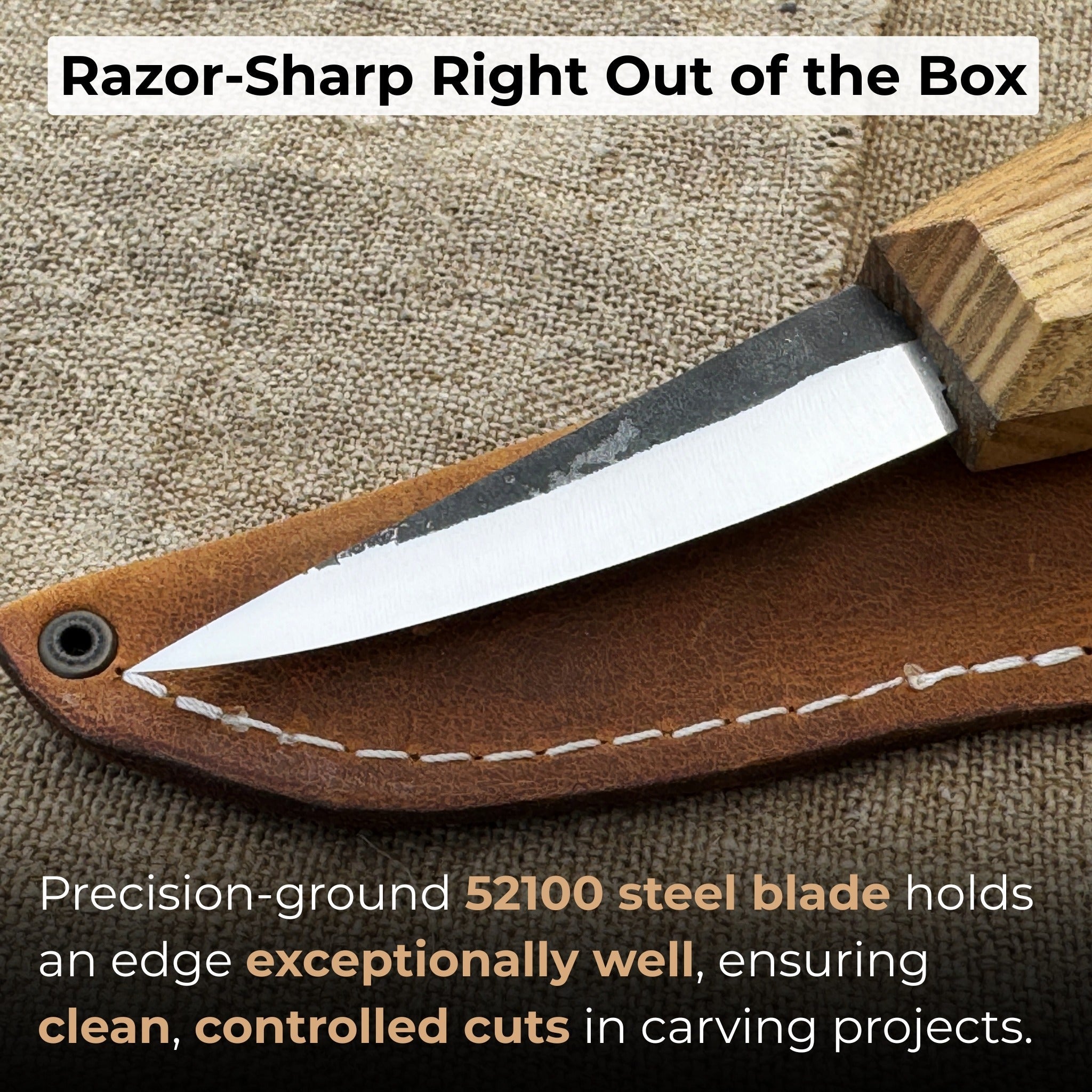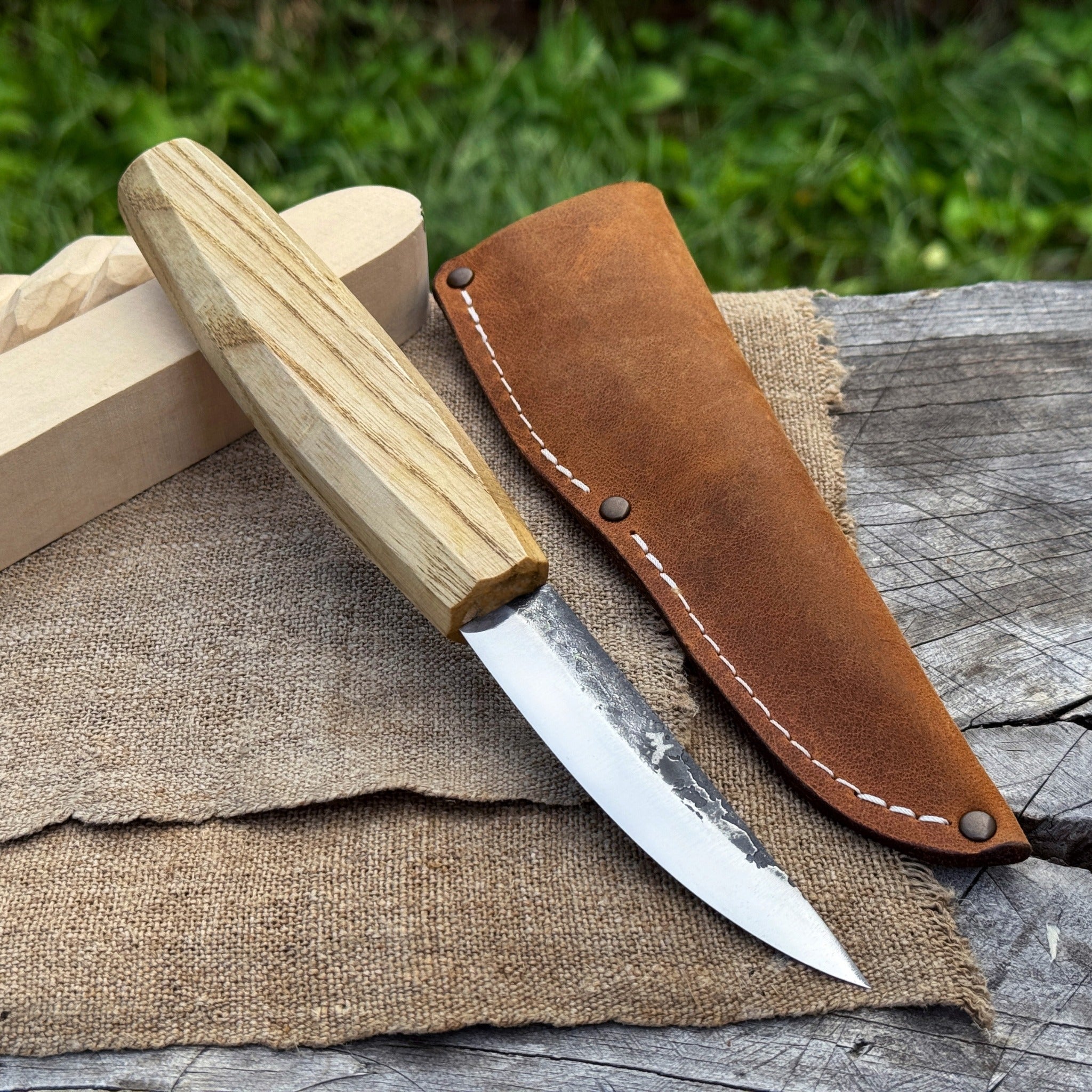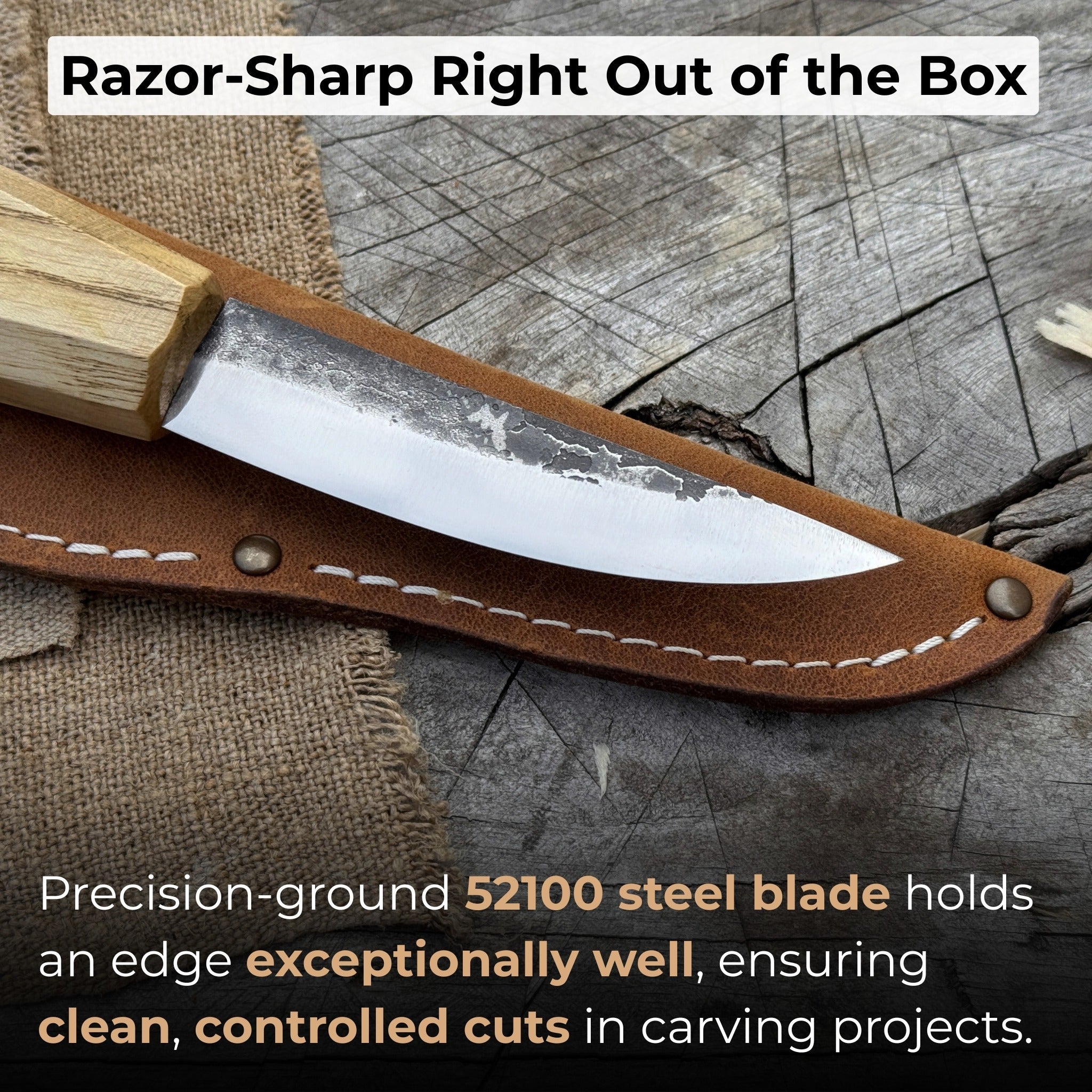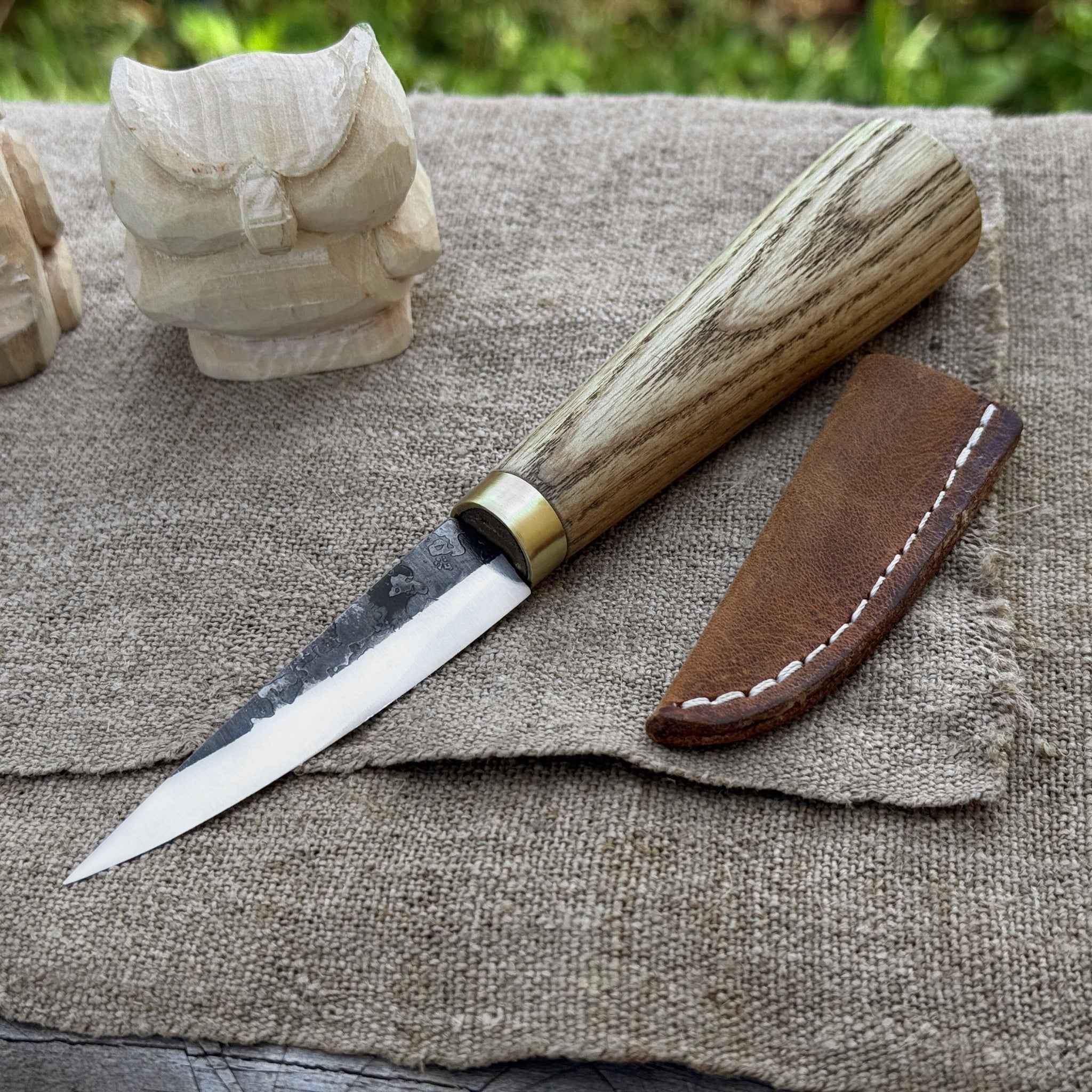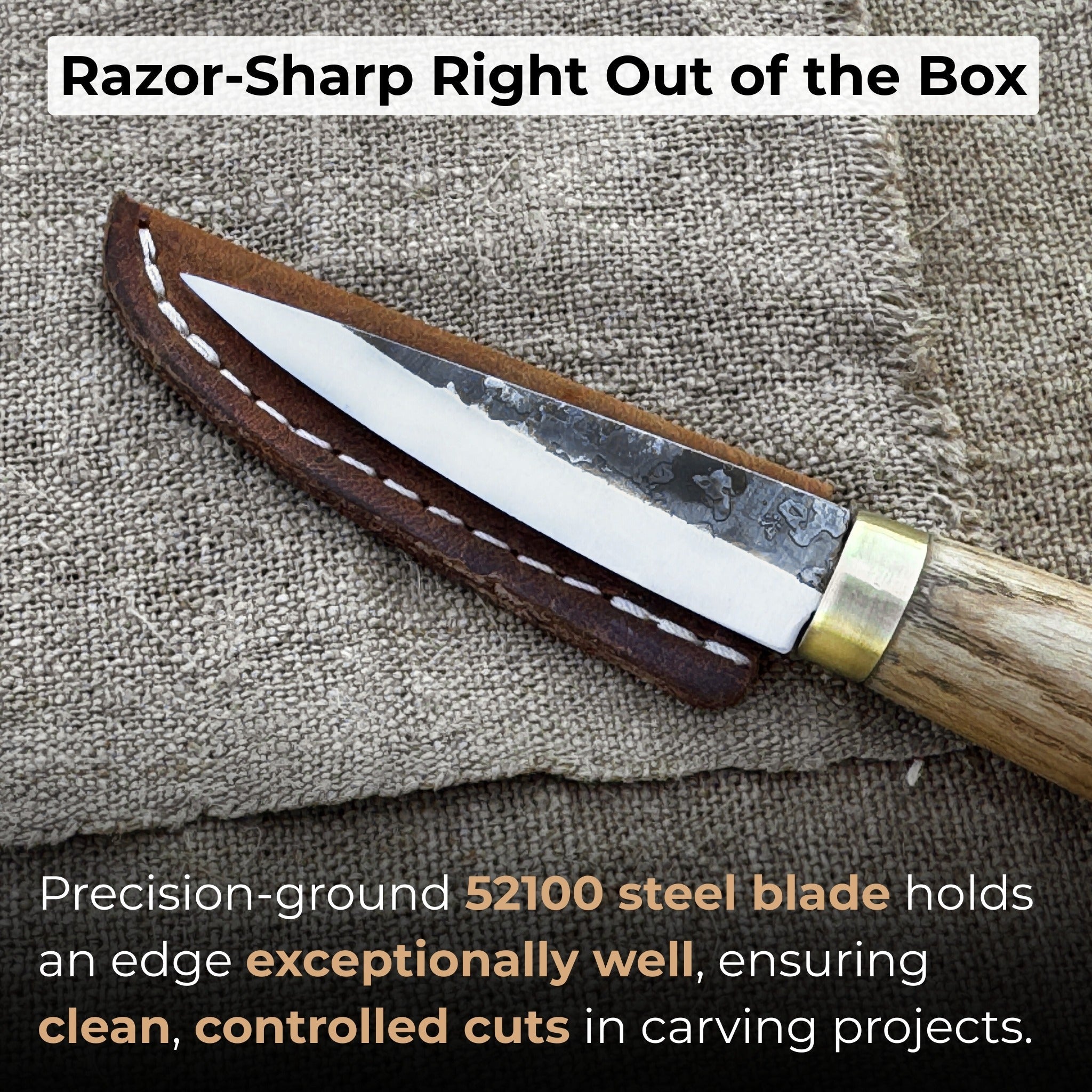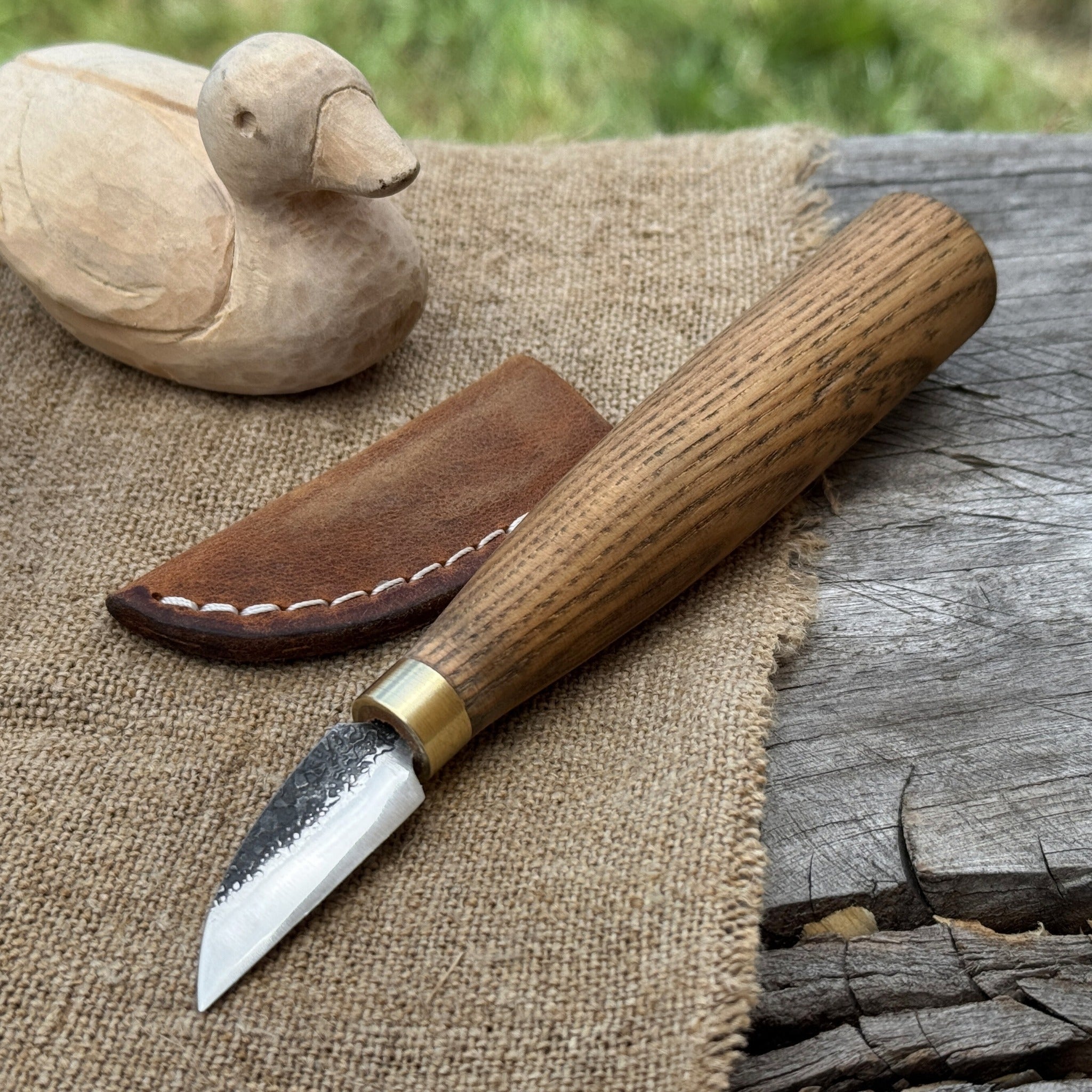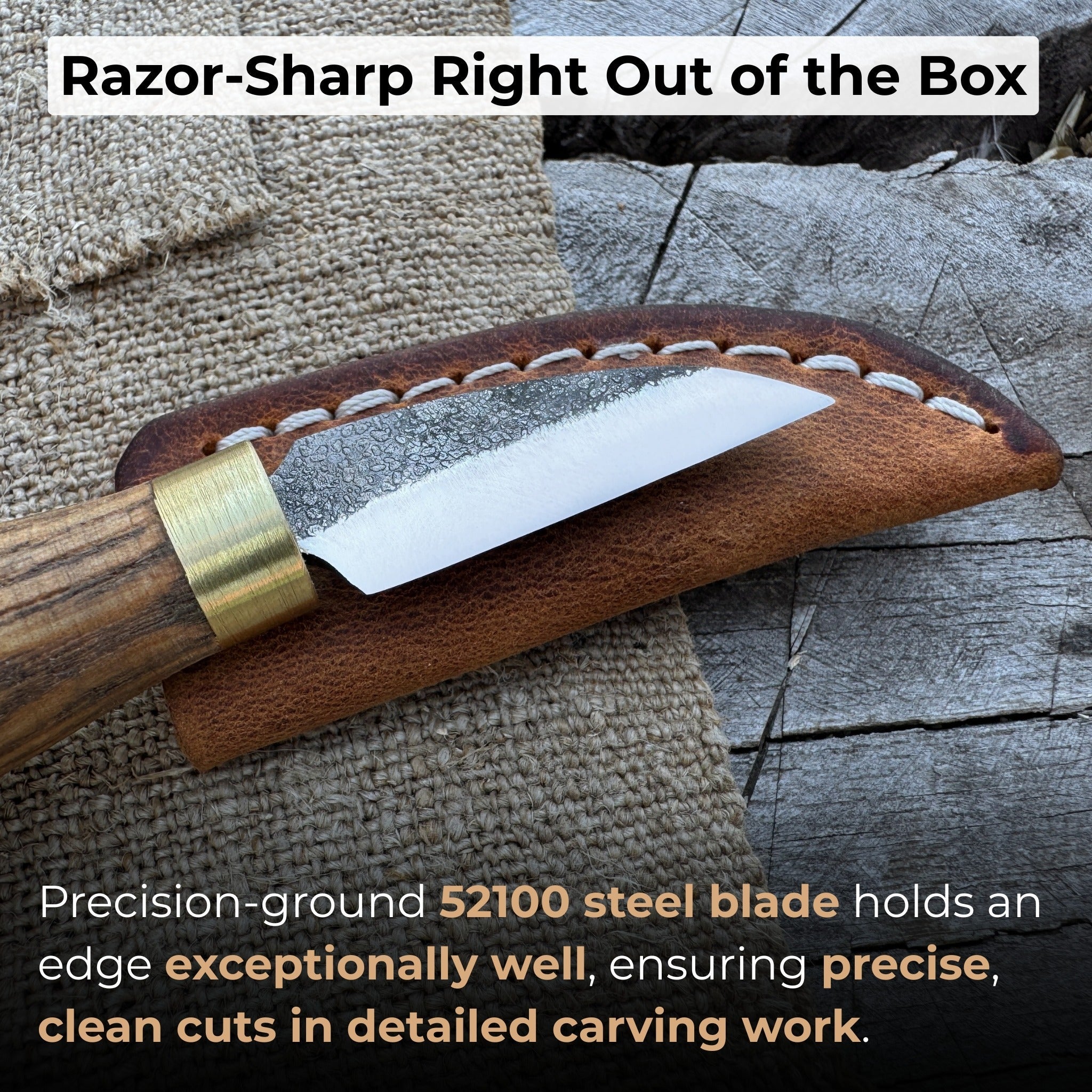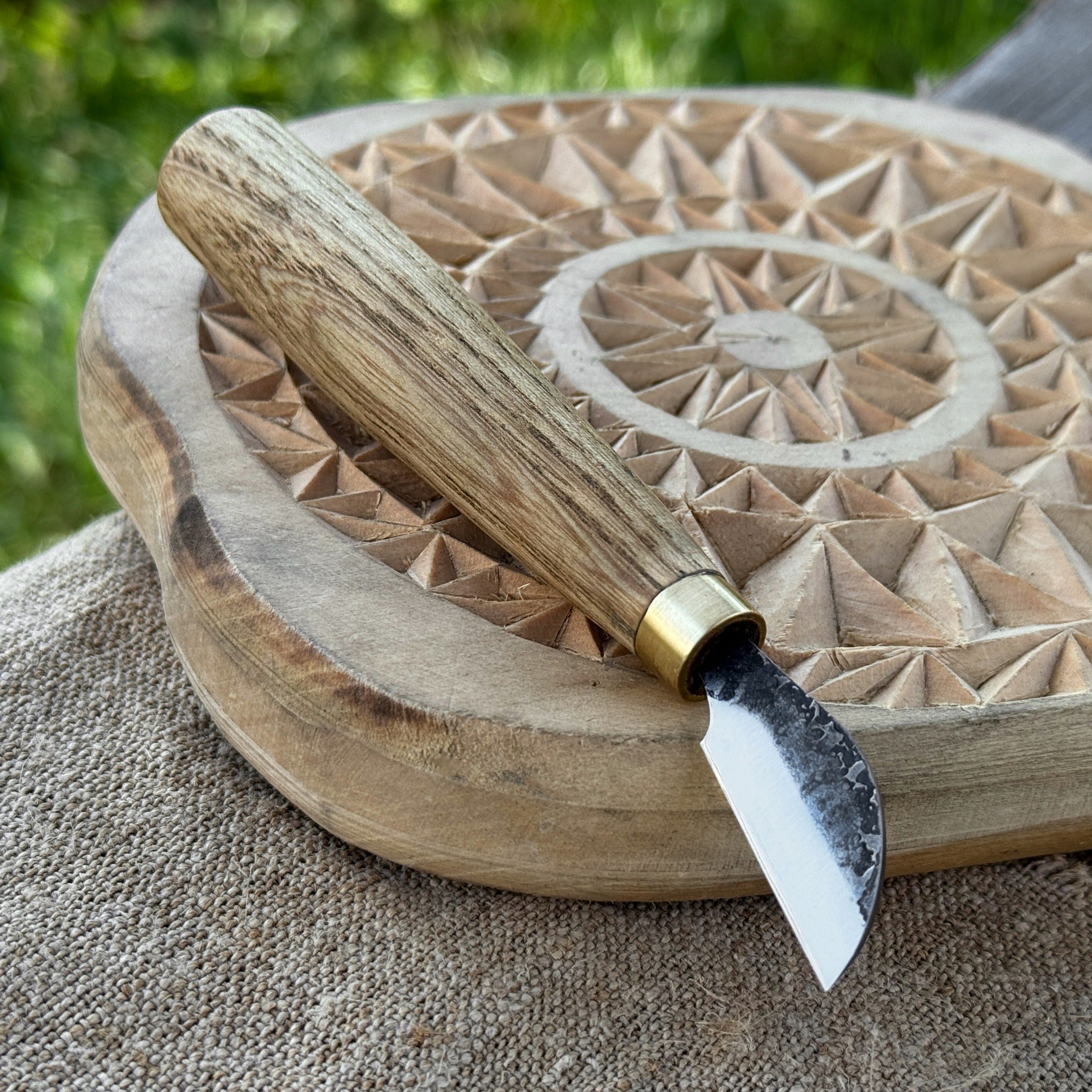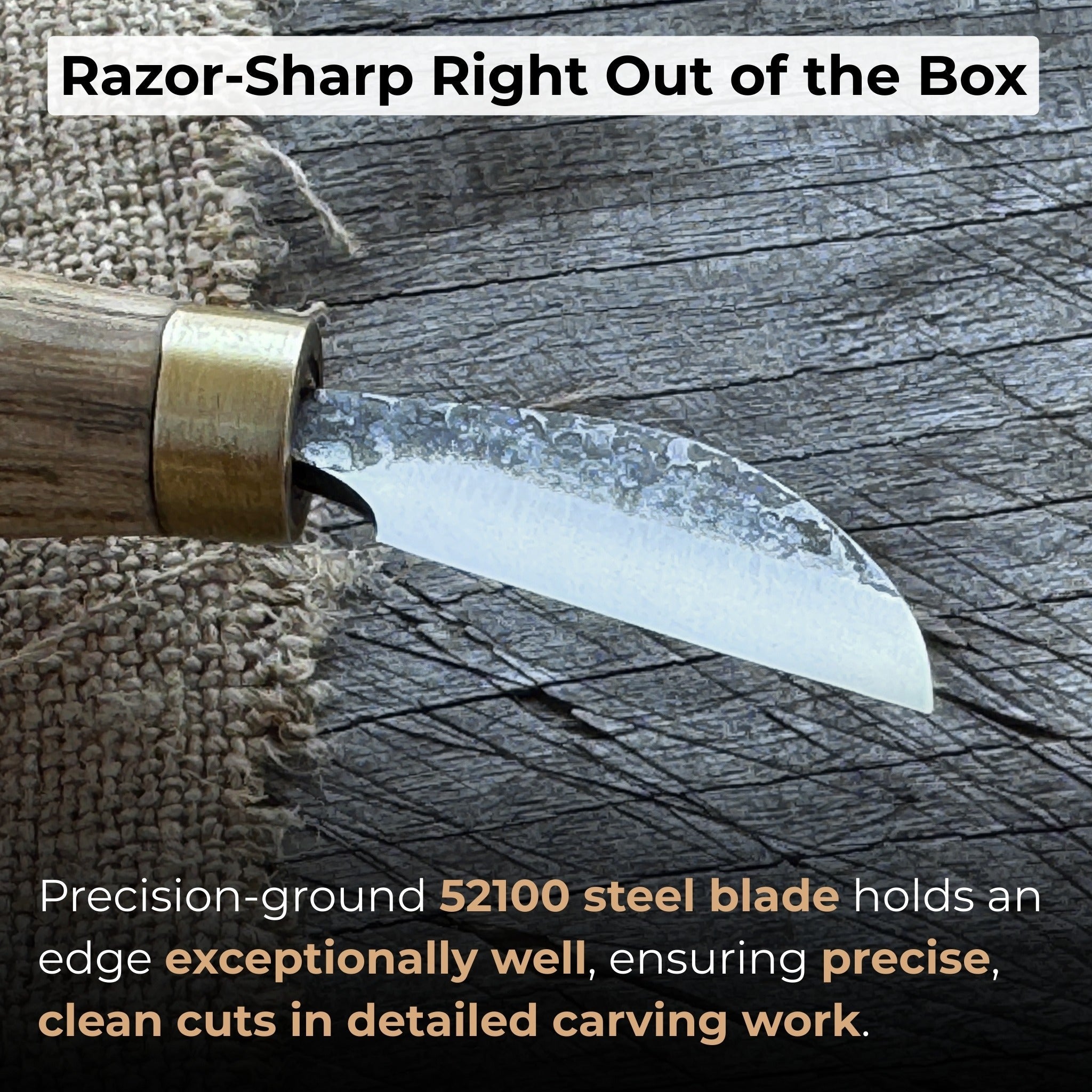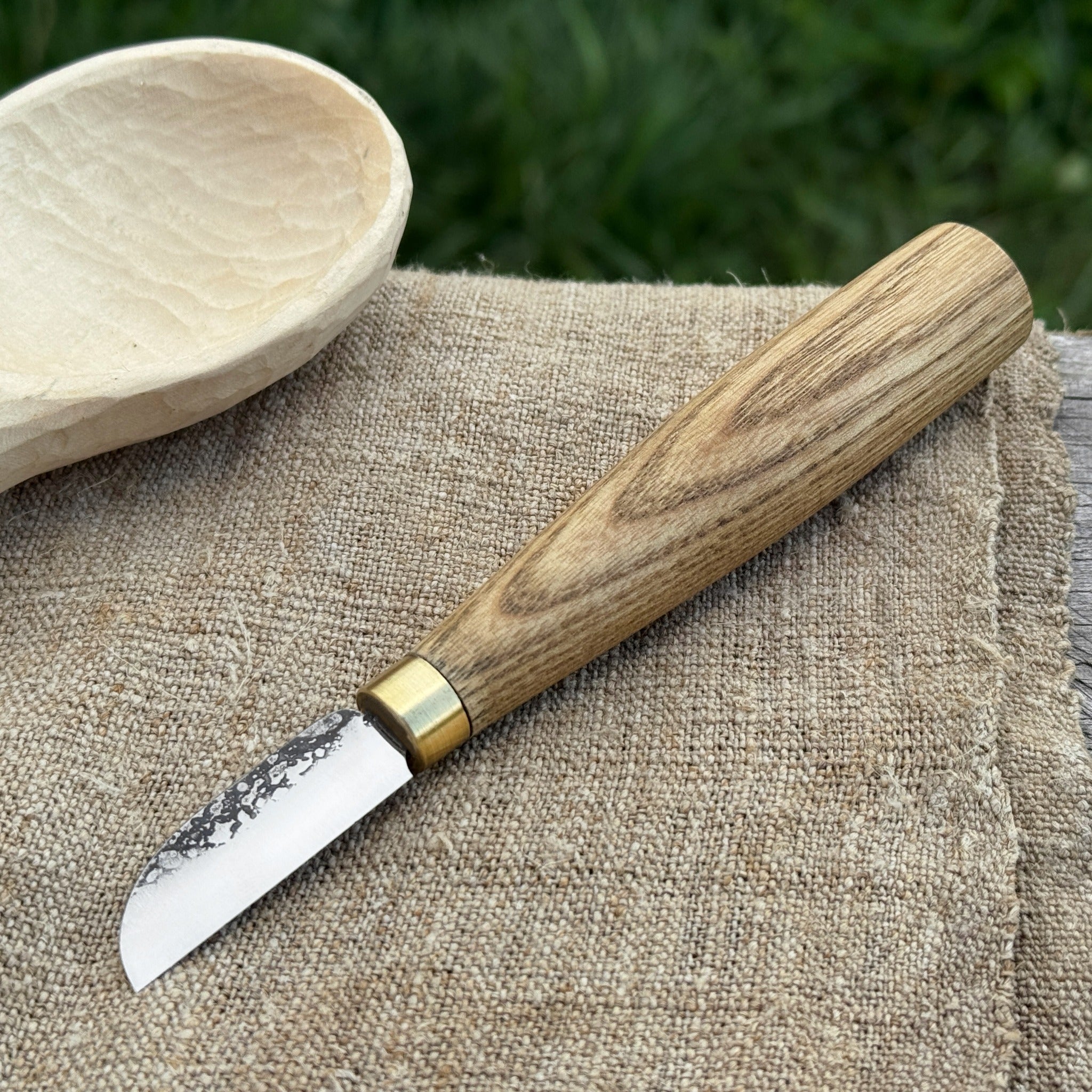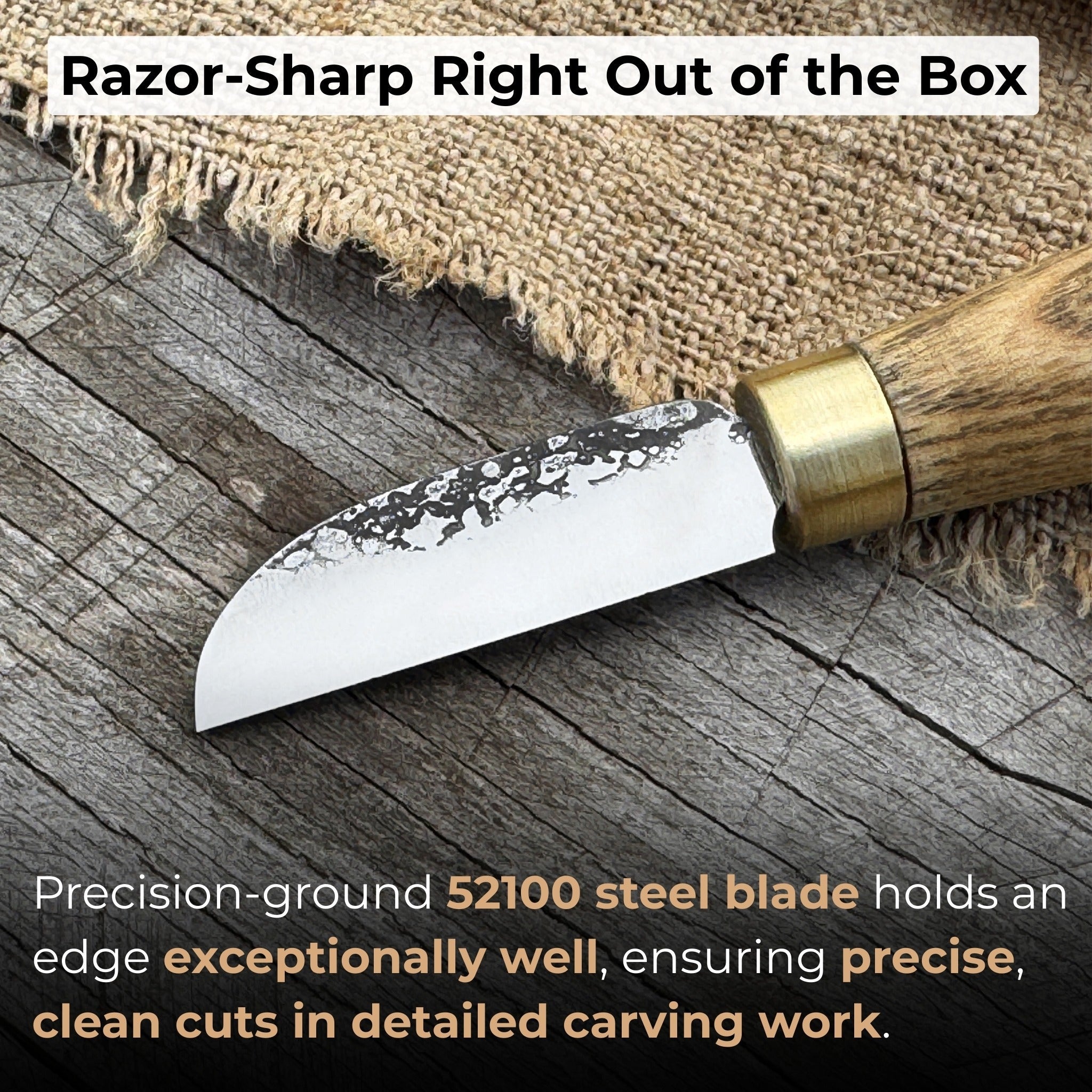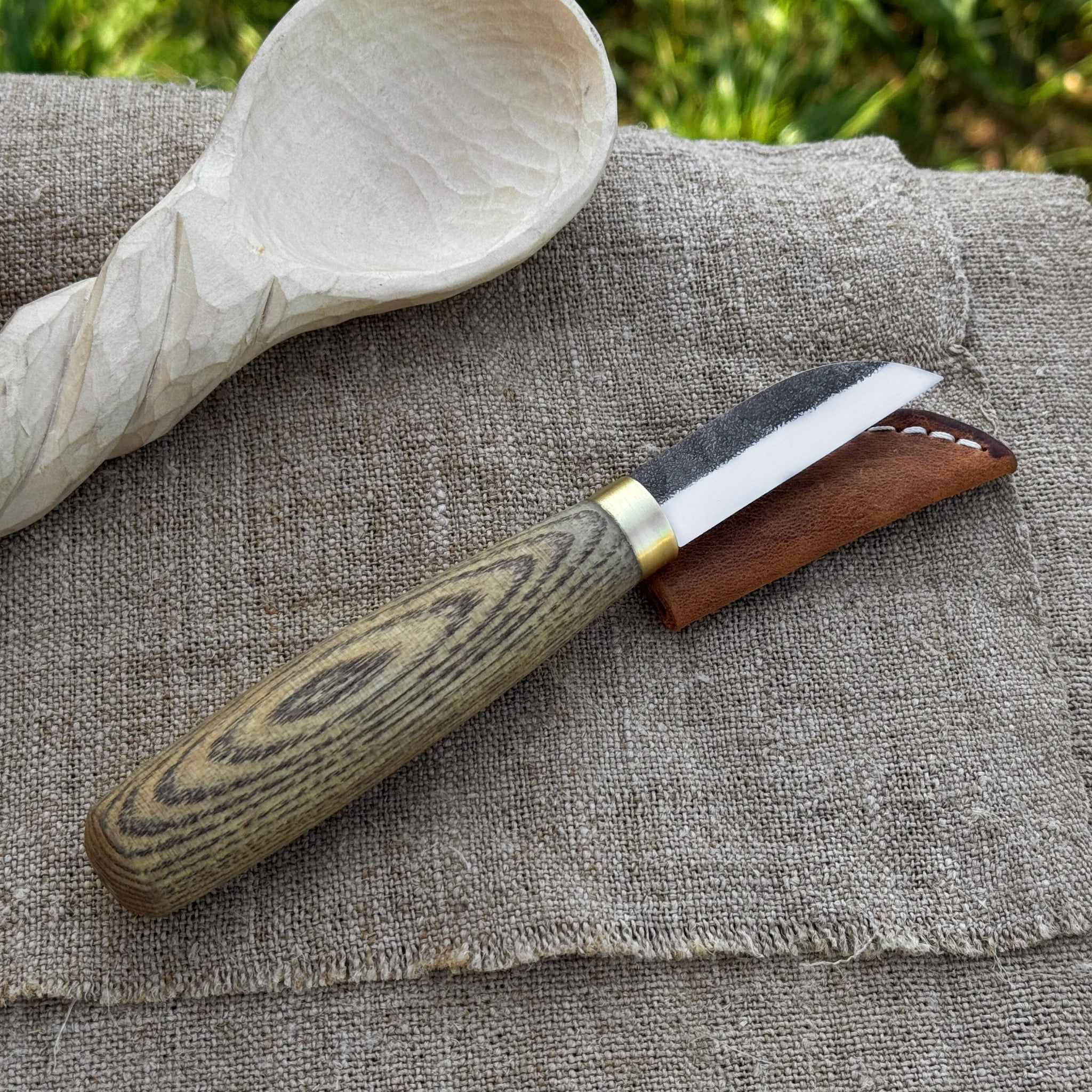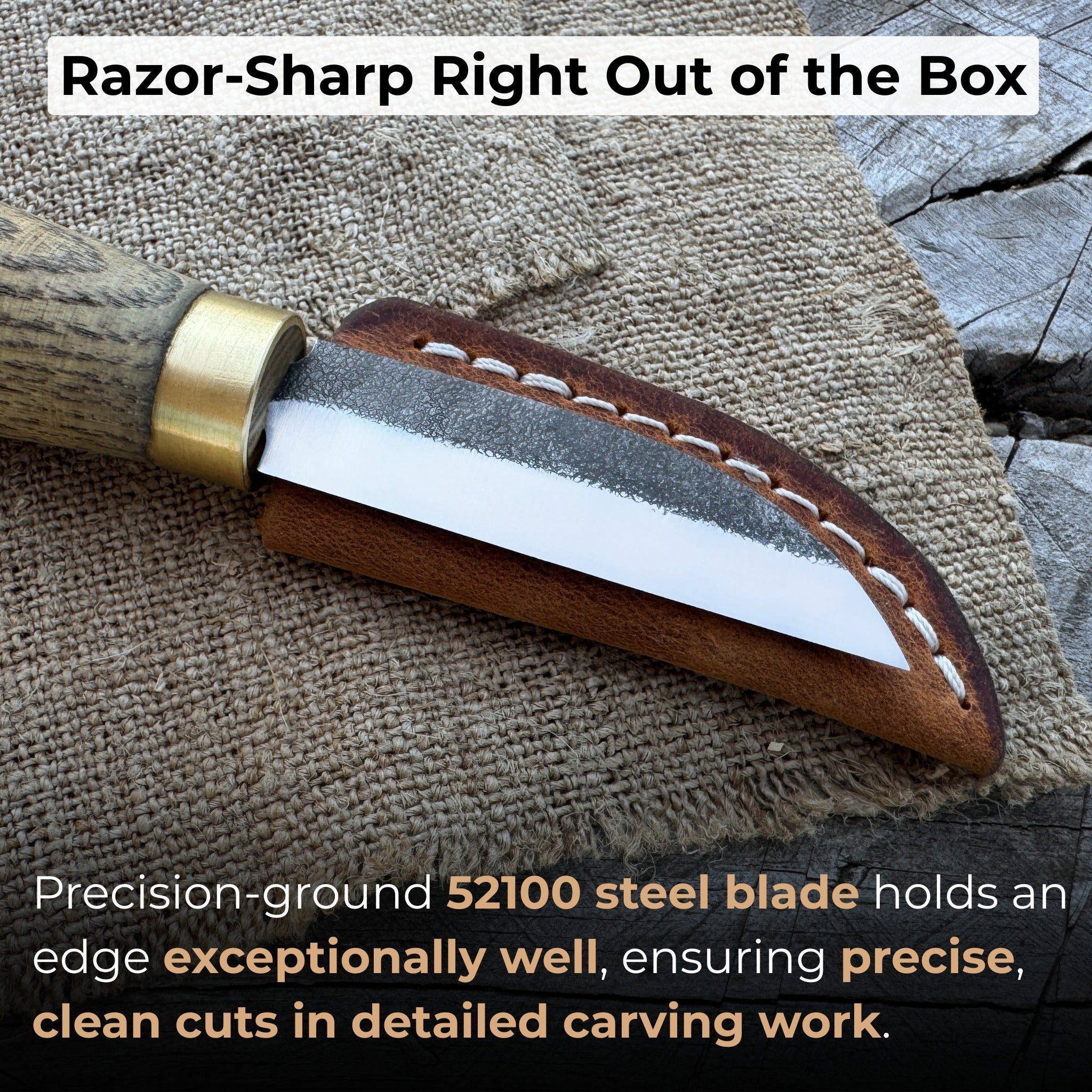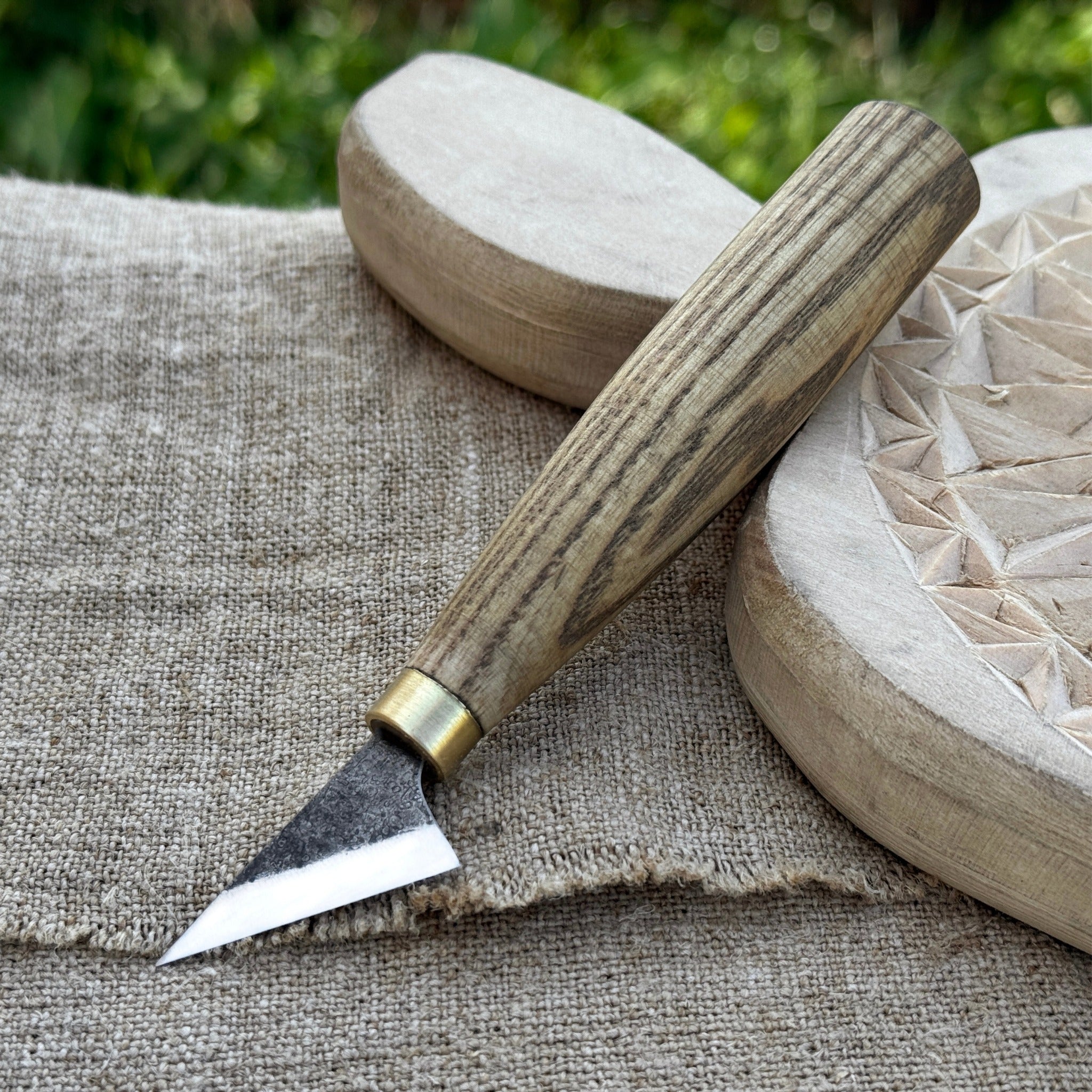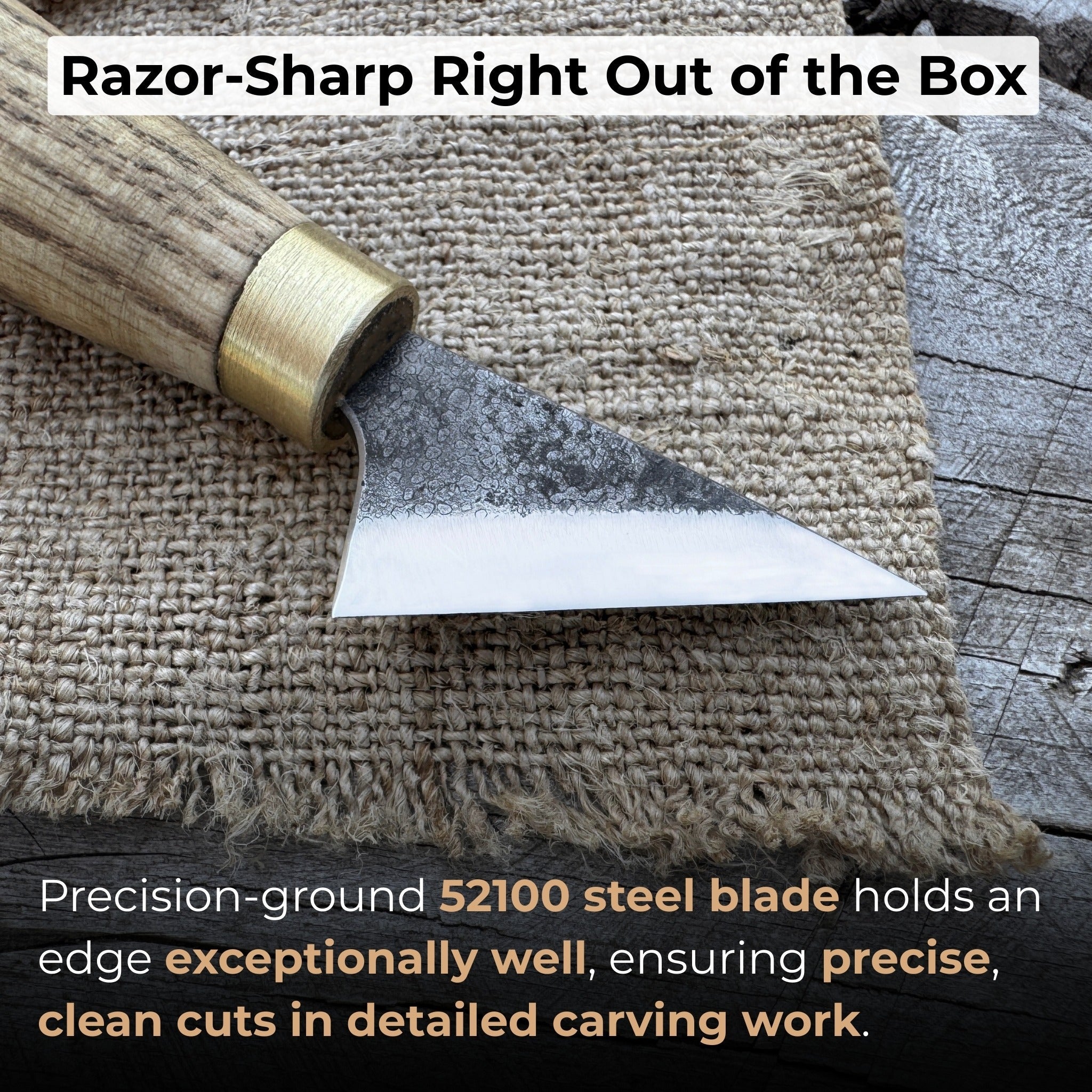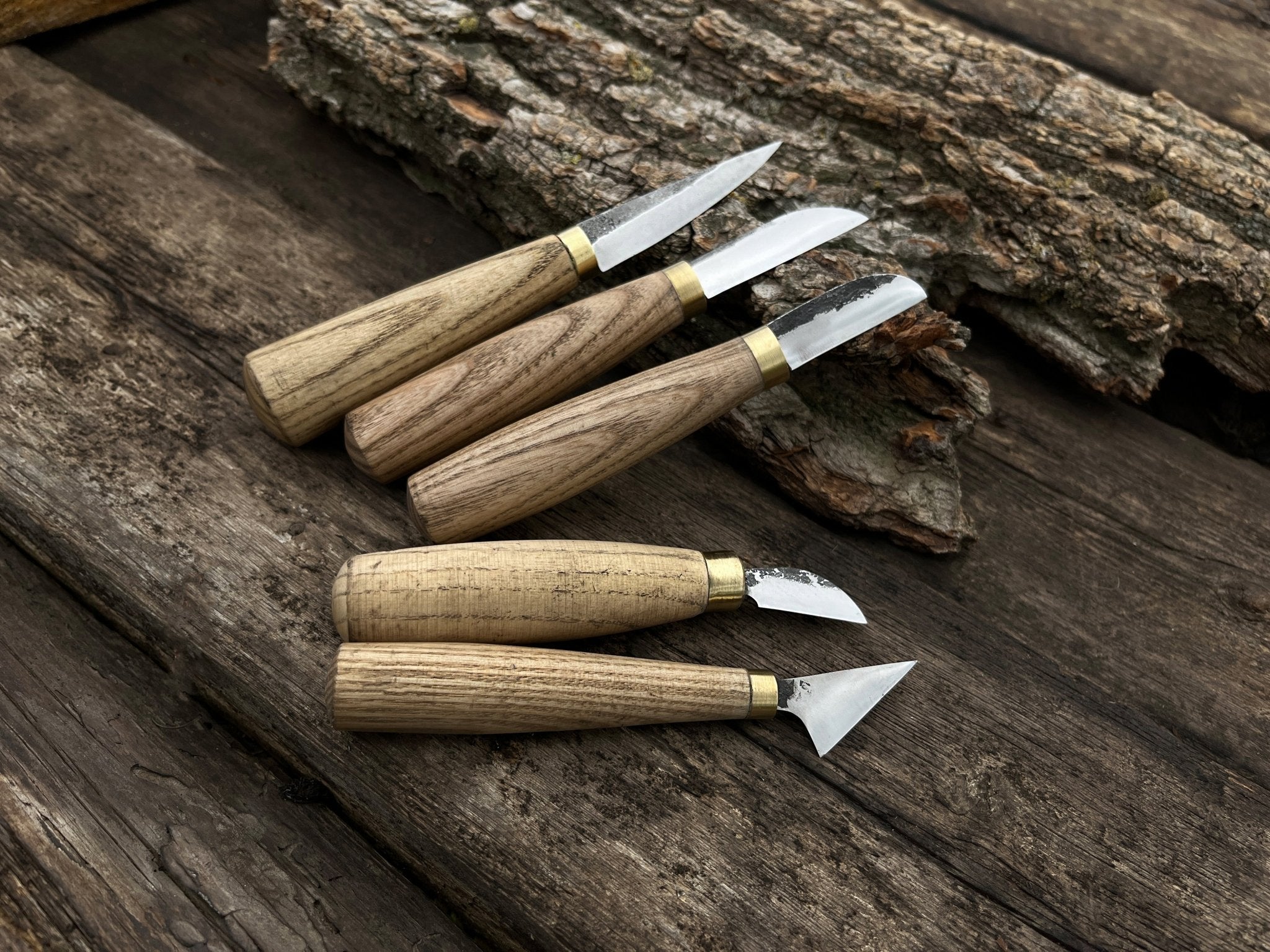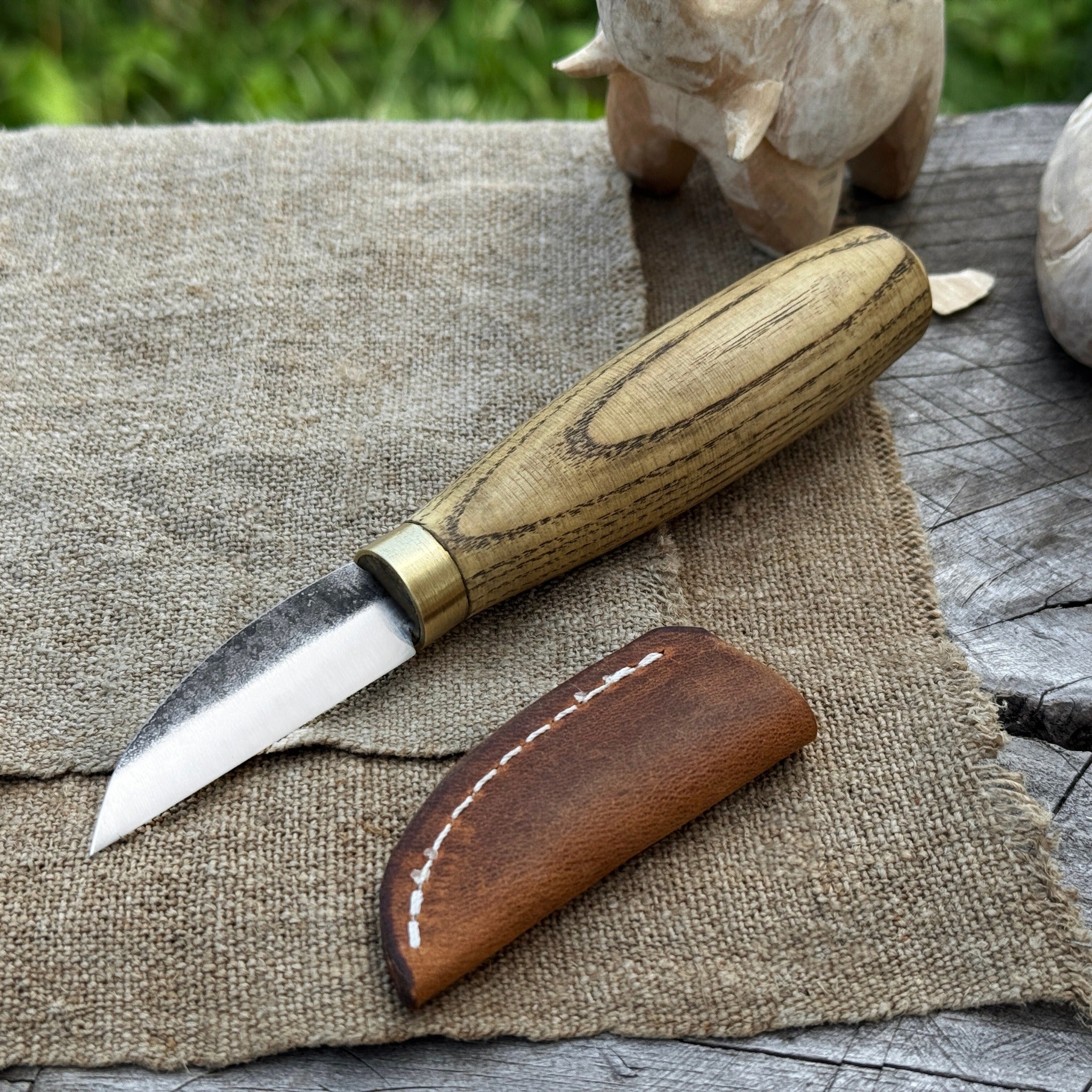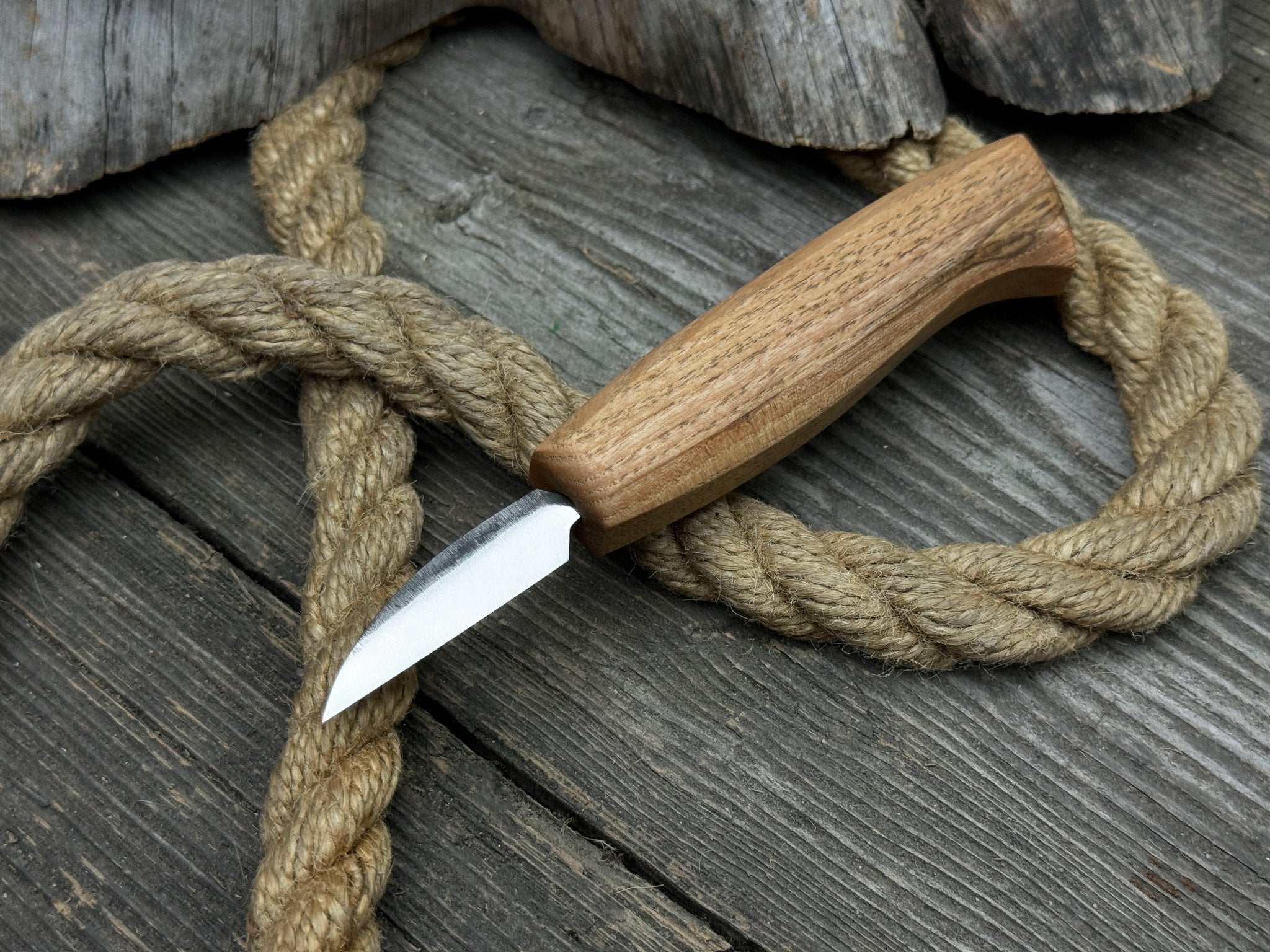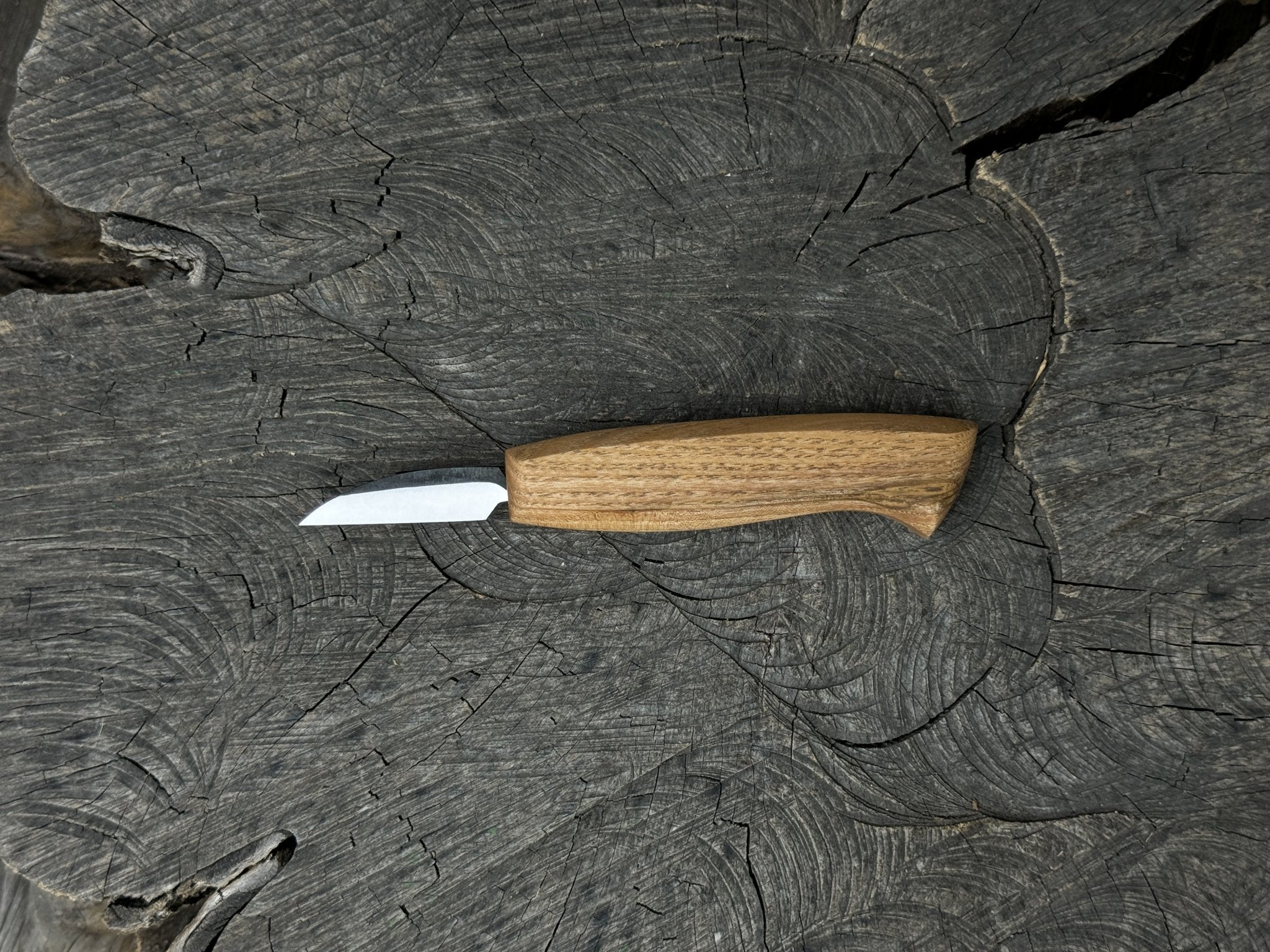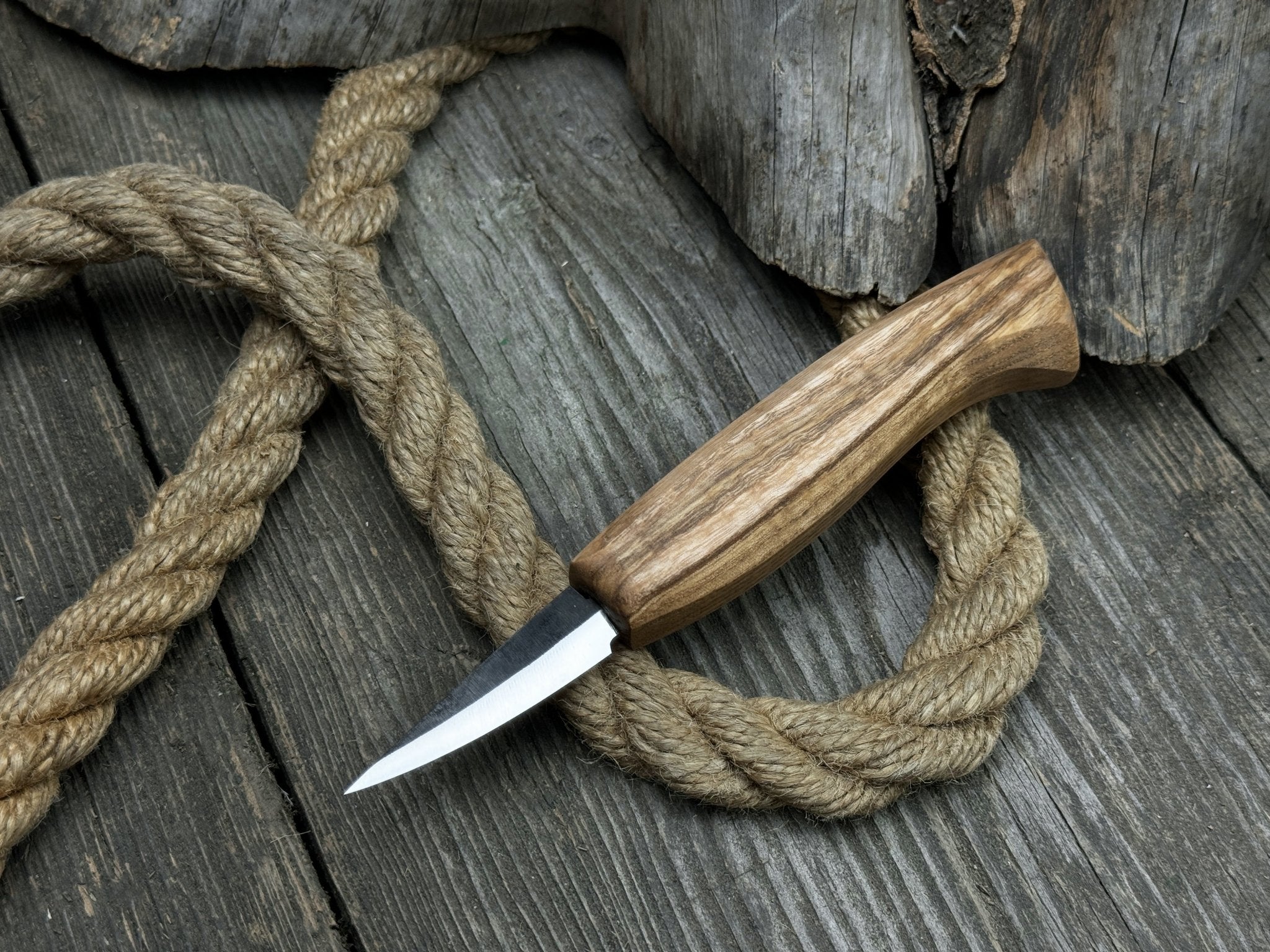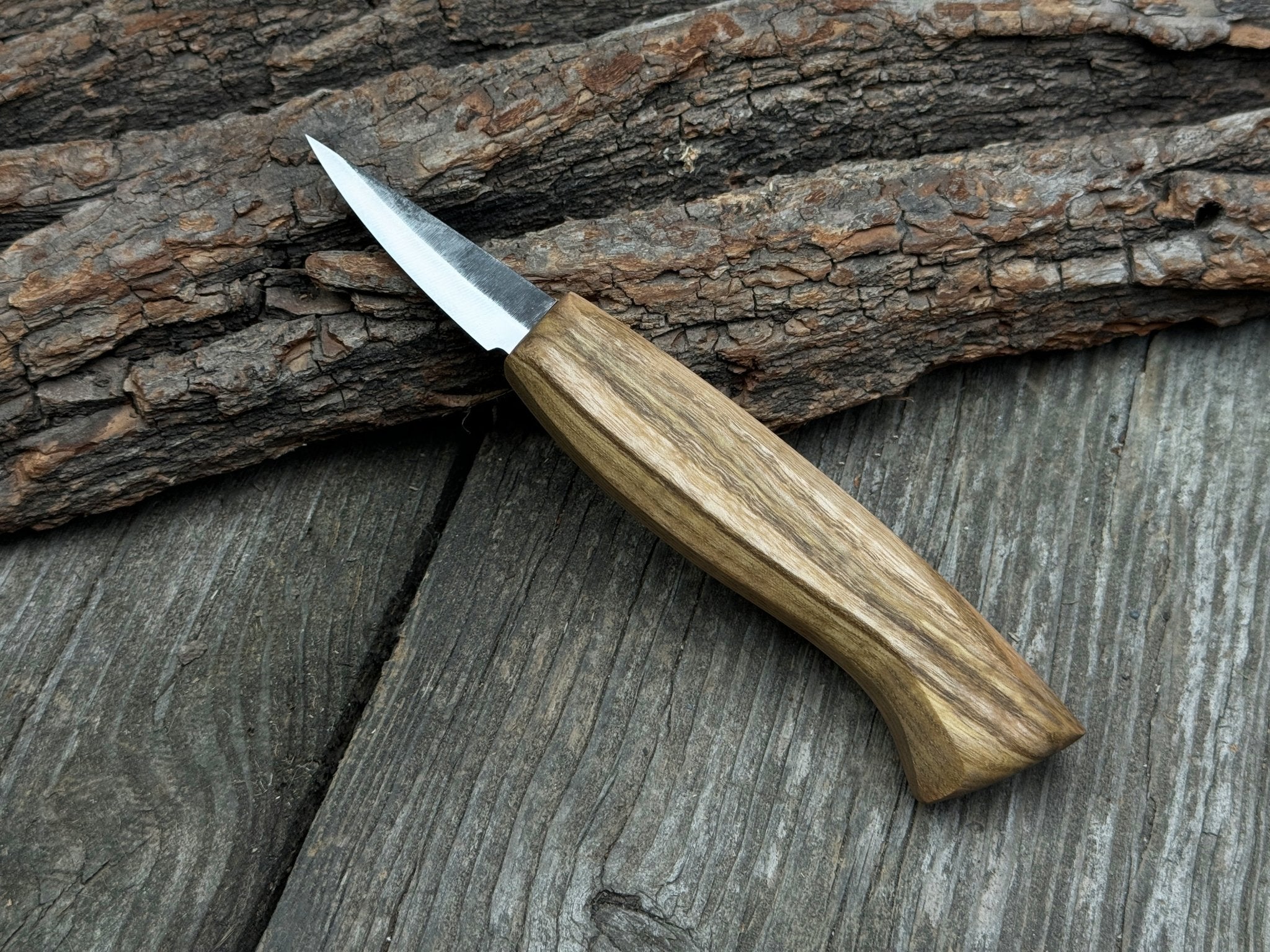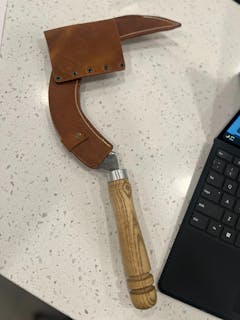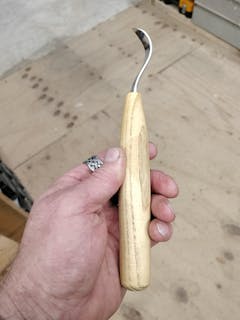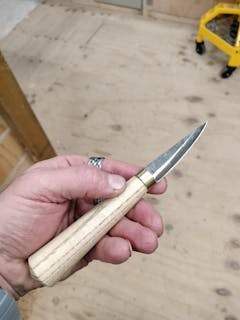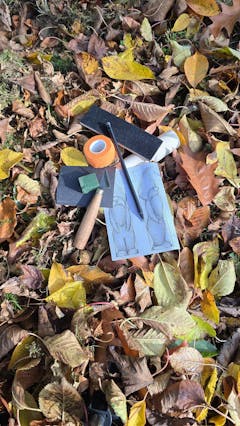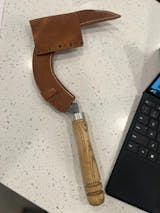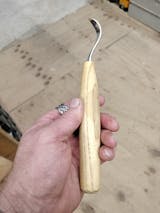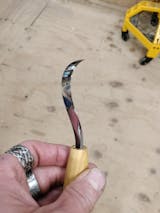Hand-Forged Sloyd Knife, 7.5 cm (2.95 inches)
Hand-Forged Sloyd Knife, 9 cm (3.54 inches)
Whittling Sloyd Knife, 7.5 cm (2.95 inches)
Small Chip Carving Knife, 3.5 cm (1.38 inches)
Chip Carving Knife, blade 3 cm (1.2 inches)
Small Chip Carving Knife, 4 cm (1.57 inches)
Chip Carving Knife, 5.5 cm (2.2 inches)

Chip Carving Knife, 3.5 cm (1.4 inches)
5-Piece Wood Carving Knife Set
Hand-Forged Roughing Knife, Blade 5 cm (1.97 inches)
Wood carving knives are highly prized worldwide and known for their excellent sharpness and high quality. Generations of wood carvers throughout history have used personalized and improved knives to suit their needs. Find out which wood carving knife will take your creativity to the next level.
What Are Wood Carving Knives?
Wood carving knives, whittling knife, or sloyd knives for wood carvingare considered among the most important and versatile tools for wood carving. Although chisels and chisels are used for carving and only a knife is used for whittling, the terms " whittling knife" and "carving" are used interchangeably.
Types of Wood Carving Knives
Different wood carving knives allow you to use different wood carving techniques. Whether you are a beginner or a professional carver, the right and quality wood carving tool will make the wood carving process much easier and more enjoyable.
Basic knives for wood carving
Sloyd wood carving knives are general-purpose knives typically used to remove large pieces of wood. However, thanks to their sharp tips, they can also be used for precision work.
Wood whittling knives are used to whittling a small piece of wood and are also suitable for rough cutting. Whittling knife is performed with only one tool—a knife—with which you give the wood the desired shape.
Bench knife for whittling, such as shaping and chamfering edges, are used for general woodworking.
Specialized knives for wood carving
Roughing carving knives for wood are used to quickly and efficiently remove large pieces of wood. Their rounded tips are resistant to breakage.
Detail carving knives for wood are ideal for carving small details in wood. They are usually shorter and have a thin and sharp tip.
Geometric whittling knives are designed to create straight and curved cuts.
Drawknives are designed for handling wood with both hands and removing large pieces. Treated wood must be secured and stabilized.
Materials and Construction
Wood carving knife can be made from various materials, including high-carbon, stainless, and laminated steel. High-carbon steel is popular due to its durability and ability to hold a sharp edge, while stainless steel is rust—and corrosion-resistant.
Construction:
• The blade should have a clean chamfer without nicks. The edge should be located in the center of the handle.
• Sturdy, tight construction with no wobble between blade and handle.
• Comfortable, ergonomically shaped handle for comfort and control.
How to Choose knife for wood carving
The choice of tools should be taken very seriously. Tools for a carver are sacred! With a good master, they are improved, updated, and supplemented throughout his life. This is personal, inviolable property. It is not customary for carvers to ask someone for tools for work or to lend them to others.
Professionals often make their tools and devices. To do this, you need to know the properties of the metal and the methods of its processing and hardening, and not at an amateurish level. The best chisels are not made of sheet metal but forged ones. They are ordered from reliable, proven blacksmiths! To quickly start carving knives for whittling, it is better to avoid bothering and buying ready-made tools.
First, decide what genre of wood carving you are going to create. The size and shape of the chisels depend on this. To create large sculptures, they must be powerful and wide. Carving on flat surfaces is best done with medium-sized chisels. For wooden miniatures, you need the smallest ones. It's clear. No one will carve a giant Buddha statue with a tiny scalpel or a chess knight with a cleaver. And for geometric carving, chisels are practically not needed. Knives for whittling, blunts, and various cuttings are relevant in this genre.
Techniques and Tips for Wood Carving
The art of wood carving is an ancient and beautiful art that allows you to create unique and delightful pieces. From delicate patterns to three-dimensional sculptures, der carvings are a source of inspiration and creativity for many artists. This article will examine some of the secrets of creating best whittling knife.
Choosing the right wood
Choosing the right type of wood is the first step to successful carving knife sets. Different types of wood have different textures, colors, and densities, which will affect the outcome of your work. Some popular types of wood for carving include oak, walnut, mahogany, and basswood. Research the properties of different types of wood and choose the one that best wood carving knives suits your project.
Preparation and planning
Before you start carving, it is essential to prepare the wood properly. Make sure the wood is dry and stable. If the wood is fresh, dry it for a few weeks. Then, use tools such as a cutter, chisel, and carving knife for wood to create a preliminary outline of your project. Plan and study the details to be sure of the final result.
Mastering carving techniques
Mastering carving knife set techniques is key to creating unique pieces. Learn different techniques, such as bevel carving, elevation carving, and relief carving. Mastering these techniques will allow you to create a variety of patterns, details, and textures in your artwork.
Tools and Equipment
Using quality tools and equipment is important to achieving high-quality work. Pay attention to the sharpness and quality of your cutting tools. Good cutting tools will ensure that your carvings are accurate and crisp. Also, invest in a good set of sharpening stones and grinding materials to keep your tools sharp.
Experimentation and creativity
Don't be afraid to experiment and show your creativity in carving. Allow your imagination and inspiration to guide you. Try new patterns, combine different techniques, and play with textures and shapes. This will help you develop your style and create truly unique works of knives for wood carving art.

